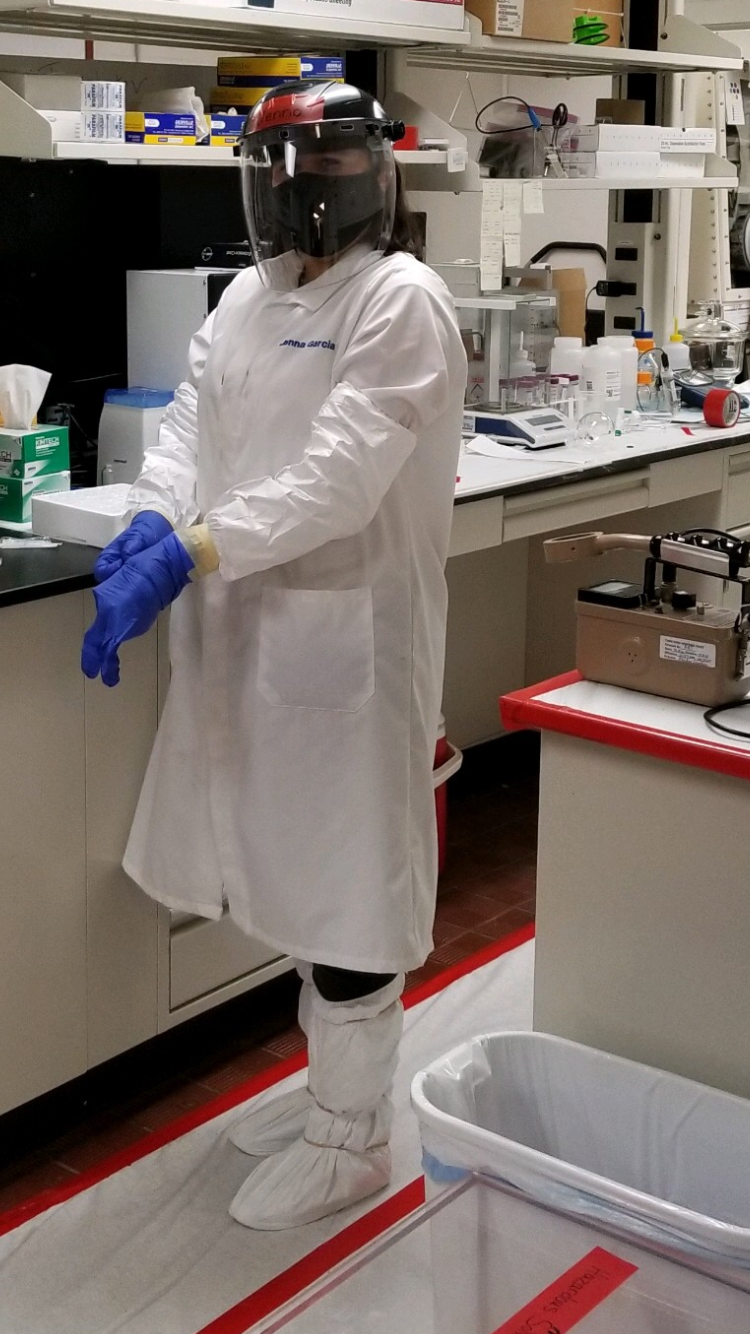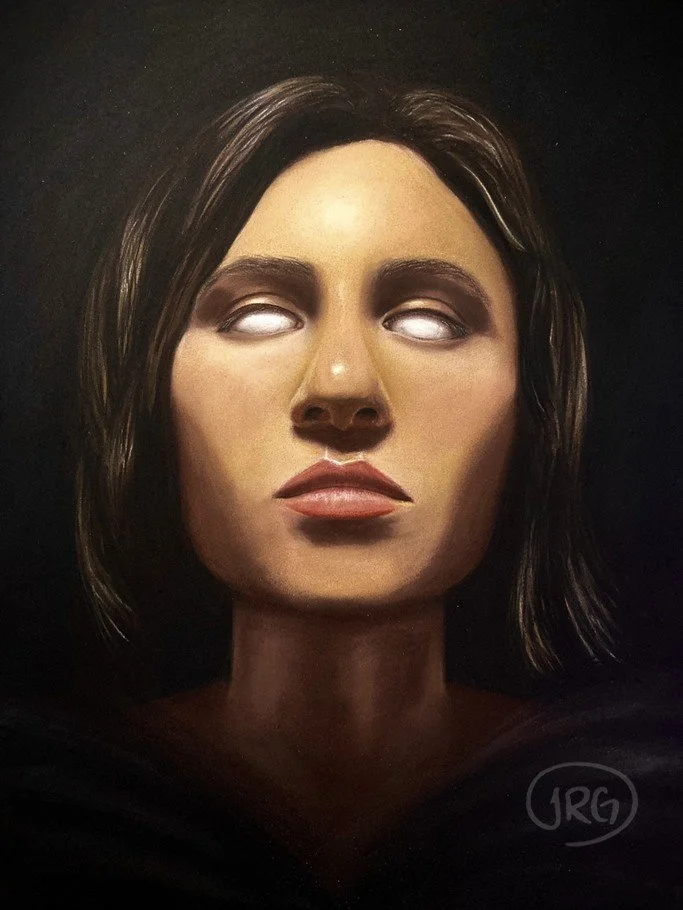Pastel Artist Working Between Texas and New Mexico
I am a pastel artist working between Texas and northern New Mexico. My work is guided by emotion, observation, and a lifelong curiosity about the world. I earned my PhD in Chemistry at Texas A&M university focusing on radiochemistry and nuclear forensics before turning fully to art, a shift that reflects not only a change in career but a deeper transformation in how I see and live. My paintings are rooted in real experiences and places that bring me peace, often landscapes that carry both light and shadow. I am drawn to nature’s textures and simpler moments, to the way a patch of grass catches late sunlight or how distant hills fade into blue. That attention to subtlety comes directly from my years in the lab, where I learned to notice what others might overlook.
Some of my recent works are exhibited at the Karen Wray Gallery in Los Alamos, New Mexico, while others are available directly through my studio and online shop.
My Journey
Art reentered my life slowly, first as a thought and then as a need.
For years, my days were spent in laboratories without windows. I did not realize how much that isolation affected me until I began interning at Los Alamos in 2020. There, a single window changed everything. I would catch myself staring at the outside light, wishing I could be outdoors rather than under fluorescent lights.
When I returned the next year, something shifted. I stayed in a quiet neighborhood where I spent evenings outside playing sports with the neighborhood kids, rolling around in the grass, admiring the trees, and watching the stars. These were simple things that many people experienced naturally in childhood, but I was living them for the first time. I saw how easily others might take these moments for granted, yet for me they were extraordinary.
Growing up, I was not allowed to explore or be independent. My home was often closed off from the outside world, with boards and paper covering the windows to block out light. Art and expression were suppressed, and it left a deep mark. Furthermore, I was told that I was unintelligent and incapable, and for a long time I believed it. Art and expression became a backburner, and I was on a mission in my adulthood to prove my capabilities to myself. I pushed myself to succeed, but in doing so I only punished myself further by living a life that was never truly mine. What I really wanted was to create.
During the last year of my doctoral degree, I discovered plein air painting. It became a way to relieve stress and reconnect with the world outside the lab. I began sketching outdoors whenever I could, at first for half an hour a week, and quickly realized how much it grounded me. By the time I earned my PhD in 2025, I knew I wanted to devote myself fully to art. My first plein air sketches grew into larger pastel works such as Tree on the Hill, Hay Bales, Evening Light on the Mesa, and Goose in Blue Grass, pieces that now mark the beginning of my life as a full time artist.
My Process and Philosophy
My scientific background still guides the way I create. almost a decade in research taught me patience, discipline, and respect for process, lessons that translate naturally to art. I approach my studio with the same organization I once brought to the lab. I keep careful systems for color, value, and workflow.
Each piece usually begins with a moment of inspiration outdoors. I observe, sketch, and take notes in pastel or graphite, focusing on light and atmosphere. Later, I return to the studio, using those plein air impressions to develop the final composition. I rely on both my emotional memory and reference photos, balancing accuracy with feeling.
I think of my work as a conversation between structure and spontaneity. Observation is my method, emotion is my language, and studio work is where they meet.
Light and Darkness
Many people describe my paintings as bright, peaceful, or serene, but that is only one side of the truth. My work often balances between light and darkness, reflecting both my desire for joy and the weight of what I have lived through. Growing up, I was surrounded by control, confinement, and fear for my safety. The windows in my home were covered with paper and boards to block out the sun, and music and art were taken away. Only later in life did I understand how damaging that kind of deprivation can be. Taking away a person’s ability to create or express themselves is one of the most devastating forms of control. Throughout history, even in the darkest circumstances, people have turned to art and music to survive.
As an adult, painting became my way of reclaiming everything that had been taken from me. Through color, I could finally say what I had never been allowed to express. That is why my work carries such contrast. A landscape like Tree on the Hill glows with sunlight and freedom, but a self portrait like Shame reaches into memories that are much darker. Even though it was vulnerable to paint, it remains one of my most meaningful works because it tells the truth.
That duality continues to define my art. When I paint sunlight on a field, it is not just the light I see, it is the relief of finally being able to see it. The peacefulness in my landscapes comes from understanding what it means to live without peace. Every bright color is, in some way, a response to the years when there was none.
Connection and Invitation
At the heart of my work is a desire to connect, to people, to places, and to the present moment. After spending so many years in isolation, I now see connection as essential to living. Painting outdoors helps me slow down and notice the world again. Each moment of observation, whether it is sunlight on a mesa or the movement of wind through grass, feels like an act of healing.
When I was working in science, I often cared more about my groupmates than about the research itself. I wanted to know how they were doing, what they were struggling with, and how I could help them feel better. It was hard for me to stay detached, and even harder to shut everyone out during my last year of graduate school just so I could finish. That time made me realize how deeply I value people’s well-being. I believe that a person who feels supported and understood can accomplish more than someone who is simply pushed to produce results. I did not realize it then, but that same instinct to care for others would eventually guide how I approach my art.
Through art, I have found a new way to connect with others. My paintings often remind people how to see the world with fresh eyes. The sense of childish wonder that I still carry encourages others to reimagine the world the way they did when it was all new. Even in a simple scene like Tree on the Hill, I want to show that everyday places can hold the same joy and awe as seeing something for the first time. If my work helps someone slow down, reconnect with the world around them, and remember why it is worth loving, then I feel I have done something worthwhile.
You can follow my journey on Instagram and Facebook (@JRGartanddesign), where I share new works, plein air studies, and glimpses into my process. Originals and prints are available directly through my website or at exhibitions in New Mexico. I always welcome conversations about art and process, and I appreciate anyone who takes the time to engage with my work.





